Exploring Marriages and Families 2nd Edition Seccombe Test Bank
$35.00
Exploring Marriages and Families 2nd Edition Seccombe Test Bank
- Description
- Reviews (0)
Description
You will receive this product immediate after placing the order
978-0133807776
Chapter 3:
Building Relationships
Part I: Multiple Choice Questions
All questions are identified by their type and level of Difficulty.
Type:
Remember the Facts
Understand the Concepts
Apply What You Know
Analyze It
Level of Difficulty:
1=Easy
2=Moderate
3=Difficult
Learning Objective:
LO 1-5
Learning Objective 1: Analyze singlehood
1. About __________ people in the U.S. never marry, and this number has __________ over the past several decades.
a) 1 million; increased
b) 22 million; decreased
c) 10 million; decreased
d) 35 million; increased
e) 4 million; remained stable *
Answer: E
TB_03_01_Singlehood, LO1, Singlehood, Skill: Remember the Facts, Difficulty: 2
2. What is confusing about the term “single”?
a) It ignores the biological causes of singleness.
b) It means the same thing as “never-married.”
c) It includes cohabiting couples who don’t see themselves as single. *
d) The Census Bureau no longer uses the term single.
e) The Census Bureau only records the number of single women, but not single men.
Answer: C
TB_03_02_Singlehood, LO1, Singlehood, Skill: Understand the Concepts, Difficulty: 2
3. A Catholic priest who knew he could never marry as a priest is an example of a(n):
a) propinquity single.
b) voluntary stable single. *
c) involuntary temporary single.
d) involuntary stable single.
e) pool of eligibles single.
Answer: B
TB_03_03_Singlehood, LO1, Singlehood, Skill: Apply What You Know, Difficulty: 2
4. Clara, at age 47, decided to adopt a child on her own because she tired of waiting around for “Mr. Right” to come along. She decided to move on with her life. Clara is an example of a(n):
a) propinquity single.
b) voluntary stable single.
c) involuntary temporary single.
d) involuntary stable single. *
e) pool of eligibles single.
Answer: D
TB_03_04_Singlehood, LO1, Singlehood, Skill: Apply What You Know, Difficulty: 2
5. In a study of 1,000 college students, the researchers found that college students:
a) most often claimed that single people were kind, caring, giving, happy, and loving.
b) were equally positive toward married people and single people.
c) assigned more negative traits to singles than to married people. *
d) believed that married people are most likely to be lonely and unhappy.
e) believed that White singles were happy and loving, but Black singles were lonely and unhappy.
Answer: C
TB_03_05_Singlehood, LO1, Singlehood, Skill: Remember the Facts, Difficulty: 2
Learning Objective 2: Discuss issues surrounding friendships
6. Which of the following is FALSE regarding friendship?
a) The health benefits of friendships are greater for men than for women. *
b) Friendships help you live longer.
c) Friendships are associated with lower blood pressure, heart rates, and cholesterol levels.
d) Friendships may help with the benefits of chemotherapy for cancer.
e) Friendships enhance our self-esteem.
Answer: A
TB_03_06_Friendships, LO2, Friendships, Skill: Remember the Facts, Difficulty: 2
7. With respect to sex differences in friendship, the research shows that:
a) female adolescents reported knowing their friends longer than did males.
b) males and females have about the same number of friends, but men’s friendships appear less personal or intimate than women’s. *
c) females consider friendship more important than do males.
d) males tend to disclose more personal information with their friends than do females.
e) female friends spend a greater amount of time on activities as compared to males.
Answer: B
TB_03_07_Friendships, LO2, Friendships, Skill: Remember the Facts, Difficulty: 3
8. Alex and Tony are two working-class high school friends who live in the same neighborhood. Which of the following is likely to characterize their friendship, as compared to middle-class friendships?
a) Their friendship has lasted longer. *
b) Their friendship is weaker.
c) There are no significant differences in friendship across social classes.
d) They are more likely to continue their friendship over the phone or through messages.
e) They are less intimate.
Answer: A
TB_03_08_Friendships, LO2, Friendships, Skill: Remember the Facts, Difficulty: 2
9. Eiko met her roommate’s brother Haruo, and they became good friends. Their relationship is strictly platonic. This is an example of a:
a) propinquity.
b) homogamous friendship.
c) cross-sex friendship. *
d) mixed-gender friendship.
e) spurious relationship.
Answer: C
TB_03_09_Friendships, LO2, Friendships, Skill: Apply What You Know, Difficulty: 2
10. Cross-sex friendships:
a) have been common throughout history.
b) are always easy to maintain.
c) never work out well.
d) are less common than in your parents’ generation.
e) can provide valuable insights into how the other sex thinks, feels, and behaves. *
Answer: E
TB_03_10_Friendships, LO2, Friendships, Skill: Understand the Concepts, Difficulty: 1
Learning Objective 3: Identify the influences on dating, courtship, and mate selection
11. Dating serves many functions. Which is not one of them?
a) provides fun and recreation
b) offers companionship
c) allows intimacy
d) removes social status *
e) assists in mate selection
Answer: D
TB_03_11_Dating, Courtship, and Mate Selection, LO3, Dating, Courtship, and Mate Selection, Skill: Understand the Concepts, Difficulty: 1
12. The emergence of dating began in the 19th and early 20th century, and was related to several social changes. Which is NOT one of them?
a) Urbanization provided jobs, disposable income, and places to socialize.
b) Women got the vote, which increased their political power. *
c) Automobiles provided transportation and a place for intimacy.
d) A new period of time between childhood and adulthood was recognized—adolescence.
e) The focus shifted from the family to the peer group.
Answer: B
TB_03_12_Dating, Courtship, and Mate Selection, LO3, Dating, Courtship, and Mate Selection, Skill: Remember the Facts, Difficulty: 2
13. One of the biggest changes in dating today relative to the past is:
a) Dating is associated less with mate selection, is more informal, and is often done in groups. *
b) The principle of least interest is in effect.
c) Propinquity is no longer an issue.
d) Calling is more common than dating.
e) The most common way that people now meet is online.
Answer: A
TB_03_13_Dating, Courtship, and Mate Selection, LO3, Dating, Courtship, and Mate Selection, Skill: Remember the Facts, Difficulty: 2
14. Many macro-level factors have shaped our micro-level choices or dating patterns today. Which is NOT one of these macro-level factors?
a) homogamy *
b) social class
c) increased coeducational opportunities for women in school and sports
d) increased equality between men and women
e) the increase in technology
Answer: A
TB_03_14_Dating, Courtship, and Mate Selection, LO3, Dating, Courtship, and Mate Selection, Skill: Understand the Concepts, Difficulty: 1
15. Dating scripts:
a) refer to the group from which we are likely to choose our mates.
b) are the same for men and women today.
c) are a set of expectations about dating. *
d) exist for women but not for men.
e) are rarely followed by Whites, as compared to minority groups.
Answer: C
TB_03_15_Dating, Courtship, and Mate Selection, LO3, Dating, Courtship, and Mate Selection, Skill: Understand the Concepts, Difficulty: 1
16. Patrick and Meg have been together for three years, and last month got engaged. Patrick gave Meg a beautiful diamond engagement ring. Meg did not give Patrick one. This reflects:
a) that Meg is a cheapskate.
b) propinquity.
c) a selection effect.
d) a spurious relationship.
e) gendered dating scripts. *
Answer: E
TB_03_16_Dating, Courtship, and Mate Selection, LO3, Dating, Courtship, and Mate Selection, Skill: Apply What You Know, Difficulty: 2
17. How do our social class, race, ethnicity, sex, and sexual orientation influence our micro-level choices with respect to dating?
a) Blacks, Hispanics, and Native Americans have gendered scripts, but Whites and Asian-Americans do not.
b) The middle class in particular controls dating opportunities to maintain their distinctive place in society.
c) Hispanic parents throw their sons and daughters a quinceañera to show that they have become adults and can now date.
d) LGBTs have a more difficult time meeting others because of social stigma. *
e) Social class, race, ethnicity, sex, and sexual orientation do not really influence our micro-level choices with respect to dating.
Answer: D
TB_03_17_Dating, Courtship, and Mate Selection, LO3, Dating, Courtship, and Mate Selection, Skill: Remember the Facts, Difficulty: 3
18. Romantic relationships tend to be ___________; in other words, we spend most of our time with people who look like us, act like us, and think like us.
a) selective
b) homogamous *
c) at the macro-level
d) spurious
e) cohabiting
Answer: B
TB_03_18_Dating, Courtship, and Mate Selection, LO3, Dating, Courtship, and Mate Selection, Skill: Understand the Concepts, Difficulty: 1
19. The percentage of 12th graders who say that they “never date” changed from __________ percent to __________ percent between 1991 and 2008.
a) 5; 10
b) 10; 5
c) 18; 8
d) 22; 11
e) 12; 28 *
Answer: E
TB_03_19_Dating, Courtship, and Mate Selection, LO3, Dating, Courtship, and Mate Selection, Skill: Remember the Facts, Difficulty: 2
20. The reason that relationships are usually homogamous is that people tend to become involved with others who live in their neighborhoods or go to the same schools or work nearby. This concept of geographical closeness is referred to as:
a) geographic state.
b) open boundaries.
c) geographic script.
d) propinquity. *
e) territorial effect.
Answer: D
TB_03_20_Dating, Courtship, and Mate Selection, LO3, Dating, Courtship, and Mate Selection, Skill: Understand the Concepts, Difficulty: 1
21. Dee is a college-educated, upper-middle class, 45-year-old Black woman who would like a homogamous relationship with a man. Yet because of social and cultural factors, her _________ is somewhat limited.
a) pool of eligibles *
b) eligible bachelor set
c) spurious dating pool
d) open boundaries
e) geographic script
Answer: A
TB_03_21_Dating, Courtship, and Mate Selection, LO3, Dating, Courtship, and Mate Selection, Skill: Apply What You Know, Difficulty: 2
22. With respect to online dating:
a) this is now the way that most people meet.
b) among those who have tried it, most did not like it.
c) about half of adults know at least one person who has dated someone they met online. *
d) people who participate in online dating services tend to be female, White, urban, young, and to have higher levels of income and education.
e) people who participate in online dating strongly believe it is the easiest and most efficient method of dating.
Answer: C
TB_03_22_Dating, Courtship, and Mate Selection, LO3, Dating, Courtship, and Mate Selection, Skill: Remember the Facts, Difficulty: 3
Learning Objective 4: Describe heterosexual cohabitation
23. How common is cohabitation?
a) About 5 percent of all couples are cohabiting, which is more than triple that in 2000.
b) About 10 percent of all couples are cohabiting, which is almost double that in 2000. *
c) No one really knows how common cohabitation is because it is impossible to gather reliable statistics.
d) More people are cohabiting than are married.
e) About 25 percent of all couples are cohabiting, which is about the same as in 2000.
Answer: B
TB_03_23_Heterosexual Cohabitation, LO4, Heterosexual Cohabitation, Skill: Remember the Facts, Difficulty: 2
24. Compared to people who are married, cohabitors:
a) have more education and are significantly more likely to have graduated from college.
b) earn more money on average.
c) are about the same age.
d) are much less likely to have children residing with them.
e) are nearly twice as likely to be interracial, particularly with one Black and one White partner. *
Answer: E
TB_03_24_Heterosexual Cohabitation, LO4, Heterosexual Cohabitation, Skill: Remember the Facts, Difficulty: 2
25. Demographer Judith Seltzer notes several important demographic trends that indicate that the meaning of cohabitation is changing. Which is one of these?
a) Cohabiting unions are more likely to be a prelude to marriage now than they were in past decades.
b) Cohabiting couples are more likely to be parents than they were in the past. *
c) Single women who become pregnant are more likely to cohabit today than to marry the child’s father.
d) The number of people who cohabit has declined since 2005.
e) Women are more likely to enjoy cohabitation than are men.
Answer: B
TB_03_25_Heterosexual Cohabitation, LO4, Heterosexual Cohabitation, Skill: Remember the Facts, Difficulty: 3
26. People who cohabit are more likely to divorce. Some people suggest that this is because the type of person who cohabits may be the same type of person who would willingly end an unhappy marriage. This is called a:
a) selection effect. *
b) random event.
c) cohabitation effect.
d) spurious relationship.
e) negative outcome performance.
Answer: A
TB_03_26_Heterosexual Cohabitation, LO4, Heterosexual Cohabitation, Skill: Understand the Concepts, Difficulty: 2
27. Nick wants to know if the relationship between cohabitation and divorce is only spurious, or does cohabitation really cause divorce?
a) the relationship is only spurious
b) cohabitation really causes divorce
c) neither is likely true
d) both are likely true but the selection effect is probably stronger *
e) there is no empirical way to know the answer to this question
Answer: D
TB_03_27_Heterosexual Cohabitation, LO4, Heterosexual Cohabitation, Skill: Understand the Concepts, Difficulty: 2
28. What are the effects of cohabitation on children?
a) The effects of cohabitation on children are virtually always negative.
b) The effects of cohabitation on children are virtually always positive.
c) Children who live with their mother and her unmarried partner have poorer school performance and exhibit more behavioral problems than do children who live solely with a single mother, with a mother and stepfather, or with two biological parents. *
d) Children who live with their mother and her unmarried partner face higher risk for poverty, food insecurity, and housing insecurity, compared to children living with a single mother.
e) Cohabiting families, as compared to married families, spend a greater amount of money on their children’s education.
Answer: C
TB_03_28_Heterosexual Cohabitation, LO4, Heterosexual Cohabitation, Skill: Remember the Facts, Difficulty: 3
Learning Objective 5: Discuss gay and lesbian intimate relationships
29. In 1996 the U.S. Congress passed a federal law, the __________, which had two main goals: (1) to define marriage as a “legal union of one man and one woman as husband and wife”; and (2) to allow each state to deny constitutional marital rights between persons of the same sex that have been recognized in another state.
a) Constitutional Marriage Provision
b) Domestic Partner Law
c) Defending Marriage Partnership Act (DMPA)
d) Heterosexual Marriage Mandate (HMM)
e) Defense of Marriage Act *
Answer: E
TB_03_29_Gay and Lesbian Intimate-Relationships, LO5, Gay and Lesbian Intimate-Relationships, Skill: Understand the Concepts, Difficulty: 1
30. Your next door neighbors are two gay men who have been cohabiting for several years. Given your understanding of the research on gay couples, which of the following statements is probably FALSE?
a) Gay couples are significantly different from lesbian couples with respect to relationship quality, social support, and the likelihood of dissolution. *
b) Your gay neighbors are similar to about half of other gay men who are also in committed relationships.
c) They are more comfortable with closeness compared to their married counterparts and more open with their partner.
d) They are similar to other heterosexual couples in most ways, and any differences are likely very small.
e) They receive less support from family and friends than do heterosexual couples.
Answer: A
LO_03_30_Gay and Lesbian Intimate-Relationships, LO5, Gay and Lesbian Intimate-Relationships, Skill: Apply What You Know, Difficulty: 3
Part II: True – False Questions
Level of Difficulty: A ranking of “1” relies upon recall of definitions; a ranking of “2” or “3” requires application or recall of more complex information.
1. Max is an unmarried adult delaying marriage while pursuing education and establishing a career; this is termed a voluntary temporary single.
Answer: T
TB_03_31_Singlehood, LO1, Singlehood, Skill: Applying What You Know, Difficulty: 1
2. Men and women have about the same number of friends, but men’s friendships appear less personal or intimate than women’s.
Answer: T
TB_03_32_Singlehood, LO1, Singlehood, Skill: Remember the Facts, Difficulty: 2
3. Members of the middle class tend to have friendships that are longer lasting than those of the working class.
Answer: F
TB_03_33_Singlehood, LO1, Singlehood, Skill: Remember the Facts, Difficulty: 2
4. Leslie and Joseph are great friends and are strictly platonic. This is an example of a cross-sex friendship.
Answer: T
TB_03_34_Friendships, LO2, Friendships, Skill: Apply What You Know, Difficulty: 1
5. “Dating” is the mechanism used around the world for finding a mate.
Answer: F
TB_03_35_Friendships, LO2, Friendships, Skill: Understanding the Concepts, Difficulty: 2
6. Industrialization and urbanization brought young people together and made dating possible.
Answer: T
TB_03_36_Dating, Courtship, and Mate Selection, LO3, Dating, Courtship, and Mate Selection, Skill: Understand the Concepts, Difficulty: 2
7. One of the biggest changes in dating over the past generation is that it is becoming more distinct from mate selection.
Answer: T
TB_03_37_Dating, Courtship, and Mate Selection, LO3, Dating, Courtship, and Mate Selection, Skill: Understand the Concepts, Difficulty: 2
8. Attitudes about relationships have become less traditional and more egalitarian, therefore dating scripts are no longer gendered.
Answer: F
TB_03_38_Dating, Courtship, and Mate Selection, LO3, Dating, Courtship, and Mate Selection, Skill: Understand the Concepts, Difficulty: 2
9. Today’s twelfth-grade students are more likely to date than they were in 1991.
Answer: F
TB_03_39_Dating, Courtship, and Mate Selection, LO3, Dating, Courtship, and Mate Selection, Skill: Remember the Facts, Difficulty: 2
10. Jack and Emma are about the same age, have the same racial and ethnic background, are both from middle-class families, and are both about to graduate from college. We would say that their relationship is homogamous.
Answer: T
TB_03_40_Dating, Courtship, and Mate Selection, LO3, Dating, Courtship, and Mate Selection, Skill: Apply What You Know, Difficulty: 1
11. Today most adults believe that cohabitation is a good thing for society.
Answer: F
TB_03_41_Heterosexual Cohabitation, LO4, Heterosexual Cohabitation, Skill: Remember the Facts, Difficulty: 2
12. People who cohabit with their partner before marriage are less likely to divorce.
Answer: F
TB_03_42_Heterosexual Cohabitation, LO4, Heterosexual Cohabitation, Skill: Remember the Facts, Difficulty: 2
13. Selection effect is when a relationship between two variables is actually caused by a third variable.
Answer: F
TB_03_43_Heterosexual Cohabitation, LO4, Heterosexual Cohabitation, Skill: Remember the Facts, Difficulty: 2
14. The research is clear: cohabitation is always bad for children.
Answer: F
TB_03_44_Heterosexual Cohabitation, LO4, Heterosexual Cohabitation, Skill: Understand the Concepts, Difficulty: 1
15. If we compare committed same-sex cohabiting to heterosexual marriages, we find that they are more alike than different.
Answer: T
TB_03_45_Gay and Lesbian Intimate-Relationships, LO5, Gay and Lesbian Intimate-Relationships, Skill: Understanding the Concepts, Difficulty: 2
Part III: Short Answer/Fill in the Blank Questions:
Level of Difficulty: A ranking of “1” relies upon recall of definitions; a ranking of “2” or “3” requires application or recall of more detailed or complex information.
1. Meghan and Jono, in the opening vignette, are an example of what type of single?
Answer: voluntary temporary single
TB_03_46_Singlehood, LO1, Singlehood, Skill: Apply What You Know, Difficulty: 1
2. List three specific examples from the text that illustrate the importance of friendship for health and well-being.
Answer: Friendships support us, help us build communities, enhance our self-esteem, teach us about ourselves and others, and can help us live longer. Friendships have been shown to lower blood pressure, heart rates, and cholesterol levels, and lead to lower levels of a particular protein linked to more aggressive cancers and that inhibits the effectiveness of chemotherapy.
TB_03_47_Friendships, LO2, Friendships, Skill: Remember the Facts, Difficulty: 3
3. List three features of men’s friendships, compared to women’s.
Answer: Men have the same number but less intimate friendships; less verbal disclosure and spend more time engaging in activities; expect less closeness, intimacy, and commitment; males know their friends for a longer period.
TB_03_48_Friendships, LO2, Friendships, Skill: Remember the Facts, Difficulty: 3
4. List three social class differences in friendship.
Answer: Members of the working and lower classes tend to have friendships that are longer?lasting than those of the middle class; the longevity of lower-class friendships allowed more opportunity to become intimate and share much about themselves; they also are less tied to technology.
TB_03_49_Friendships, LO2, Friendships, Skill: Remember the Facts, Difficulty: 3
5. What is the term used to describe platonic friendships between men and women?
Answer: cross-sex friendships
TB_03_50_Friendships, LO2, Friendships, Skill: Remember the Facts, Difficulty: 1
6. List the five functions of dating.
Answer: provides fun and recreation; offers companionship; allows intimacy; confers social status; assists in mate selection
TB_03_51_Dating, Courtship, and Mate Selection, LO3, Dating, Courtship, and Mate Selection, Skill: Remember the Facts, Difficulty: 3
7. Why did women have such little power in colonial American “calling”?
Answer: Women had to sit and wait to be called upon, and hope for the best. Since there were so few opportunities for women outside of marriage and motherhood, they knew that they desperately needed to marry.
TB_03_52_Dating, Courtship, and Mate Selection, LO3, Dating, Courtship, and Mate Selection, Skill: Understand the Concepts, Difficulty: 2
8. A set of expectations about how to behave on a date is called a ___________.
Answer: dating script
TB_03_53_Dating, Courtship, and Mate Selection, LO3, Dating, Courtship, and Mate Selection, Skill: Remember the Facts, Difficulty: 1
9. Josefina attended a coming-out party for her Hispanic friend who just turned 15. It was an elaborate celebration of her womanhood, which is called a/an _____________.
Answer: quinceañera
TB_03_54_Dating, Courtship, and Mate Selection, LO3, Dating, Courtship, and Mate Selection, Skill: Remember the Facts, Difficulty: 1
10. List the two reasons that most relationships are homogamous.
Answer: (1) propinquity and (2) parents may exert pressure on children to marry “their own kind.”TB_03_55_Dating, Courtship, and Mate Selection, LO3, Dating, Courtship, and Mate Selection, Skill: Remember the Facts, Difficulty: 2
11. List three characteristics of cohabitors, compared to those who have not cohabited.
Answer: male, Black, some college, not very religious, White protestant
TB_03_56_Heterosexual Cohabitation, LO4, Heterosexual Cohabitation, Skill: Remember the Facts, Difficulty: 3
12. What do we mean by a selection effect with respect to cohabitation and divorce?
Answer: The type of person who cohabits may be the same type of person who would willingly end an unhappy marriage.
TB_03_57_Heterosexual Cohabitation, LO4, Heterosexual Cohabitation, Skill: Understand the Concepts, Difficulty: 2
13. What do we mean when we say that the relationship between cohabitation and divorce is spurious?
Answer: Both cohabitation and divorce are really caused by a third factor.
TB_03_58_Heterosexual Cohabitation, LO4, Heterosexual Cohabitation, Skill: Understand the Concepts, Difficulty: 2
14. List two reasons why children in two-parent biological families on average experience better academic, psychological, and social outcomes.
Answer: Children in two-parent families tend to have greater family incomes, experience fewer transitions in their lives, and have more involvement with their fathers.
TB_03_57_Heterosexual Cohabitation, LO4, Heterosexual Cohabitation, Skill: Remember the Facts, Difficulty: 3
15. Dr, Kurdek’s research compares same-sex and heterosexual relationships. How alike or different are they?
Answer: mostly alike
TB_03_60_Gay and Lesbian Intimate-Relationships, LO5, Gay and Lesbian Intimate-Relationships, Difficulty: 1
Part IV: Essay Questions:
1. List the four types of singles described in the chapter. Discuss how micro- and macro-level forces impact two kinds of singles.
TB_03_61_Singlehood, LO1, Singlehood, Skill: Analyze It, Difficulty: 3
2. Explain sex differences in friendship. What might account for these differences?
TB_03_62_Friendships, LO2, Friendships, Skill: Apply What You Know and Analyze It, Difficulty: 3
3. Discuss some micro-level and macro-level factors associated with dating. Explore how macro-level factors have influenced your dating history.
TB_03_63_Dating, Courtship, and Mate Selection, LO3, Dating, Courtship, and Mate Selection, Skill: Apply What You Know and Analyze It, Difficulty: 3
4. Write an essay describing the effects of cohabitation on children, and the possible reasons for these effects.
TB_03_64_Heterosexual Cohabitation, LO4, Heterosexual Cohabitation, Skill: Analyze It, Difficulty: 3
5. Compare and contrast same-sex and heterosexual relationships. What are the differences and similarities?
TB_03_65_Gay and Lesbian Intimate-Relationships, LO5, Gay and Lesbian Intimate-Relationships, Skill: Analyze It, Difficulty: 3
Be the first to review “Exploring Marriages and Families 2nd Edition Seccombe Test Bank”
You must be logged in to post a review.






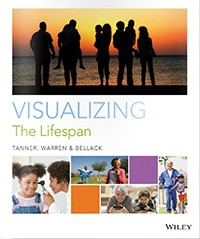
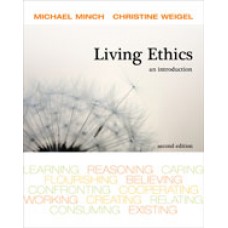
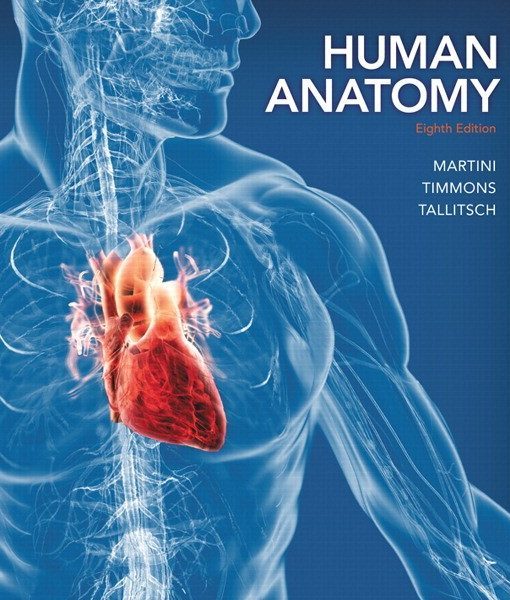
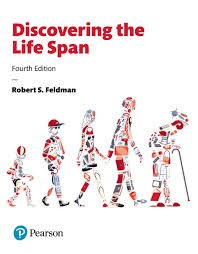
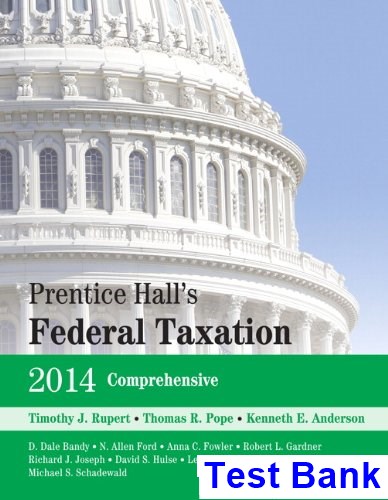
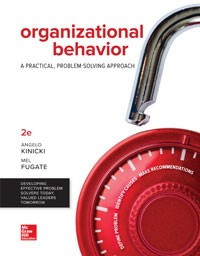
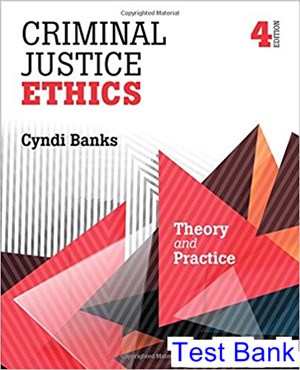

Reviews
There are no reviews yet.